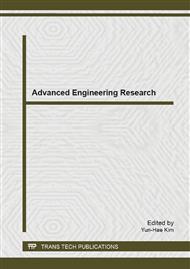p.557
p.562
p.567
p.572
p.576
p.583
p.588
p.593
p.597
Effect of Solution Temperature on the Microstructure and Mechanical Properties of Wrought 316LN Stainless Steel
Abstract:
The effect of forging and solution temperature on the microstructure and mechanical properties of 316LN stainless steel has been investigated by optical microscope, tensile testing machine and scanning electron microscope (SEM). The results show that the average grain size of the steel was refined from 150μm to 70μm after forging and solution treatment. With increasing solution temperature, the tensile strength and yield strength decreased. On the contrary, the elongation of the steel increased with increasing solution temperature except at 1200°C. The tensile strength of the samples forged at 1100°C is better than those of the samples forged at 1000 and 1200°Cafter solution treatment. Tensile fracture morphologies observation showed that all the specimens have ductile fracture morphologies. With increasing solution temperature, the toughness of the steel becomes better and better except at 1200°C. Both the microstructure and mechanical properties of the 316LN stainless steel have been improved after forging at 1100°C and following by solution treatment at 1150°C.
Info:
Periodical:
Pages:
576-582
Citation:
Online since:
April 2014
Authors:
Price:
Сopyright:
© 2014 Trans Tech Publications Ltd. All Rights Reserved
Share:
Citation:


